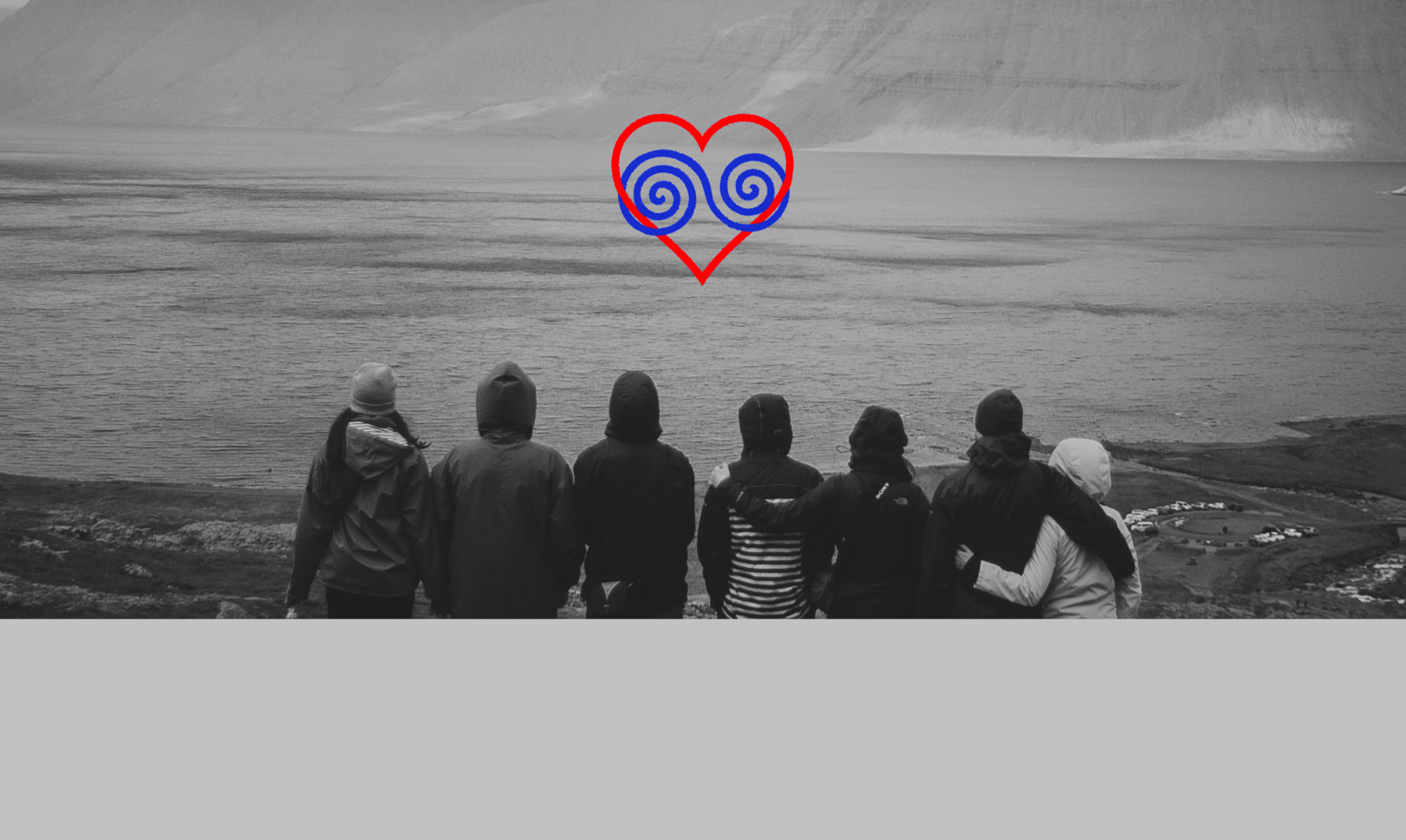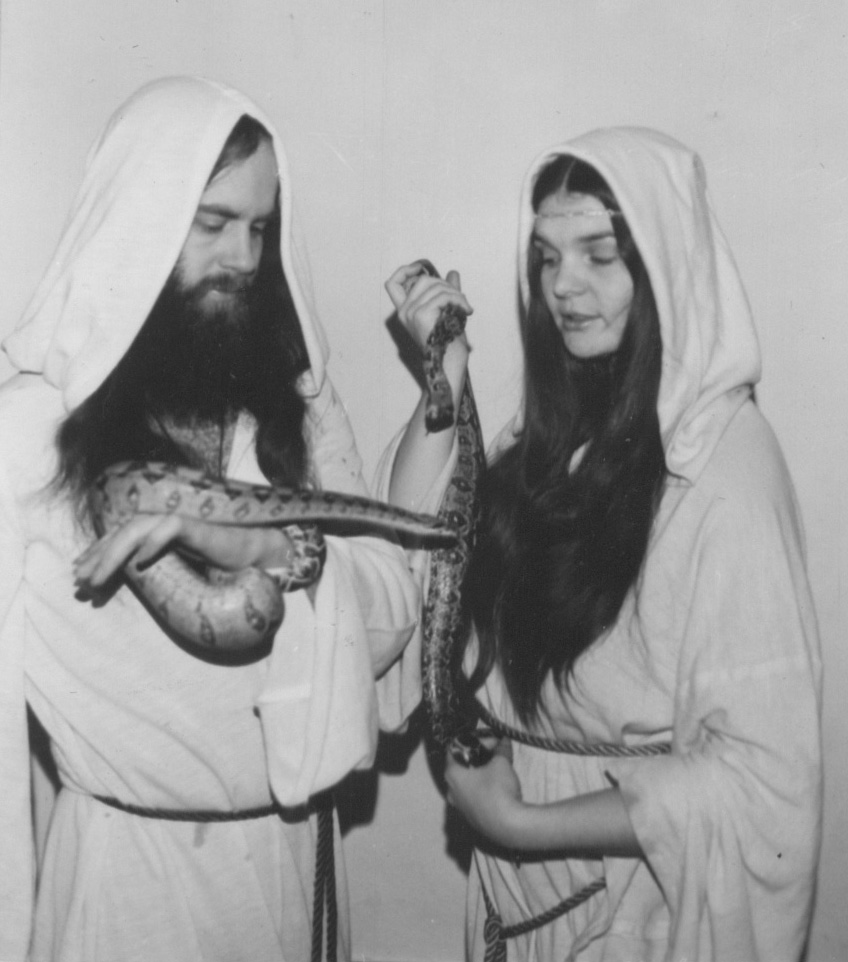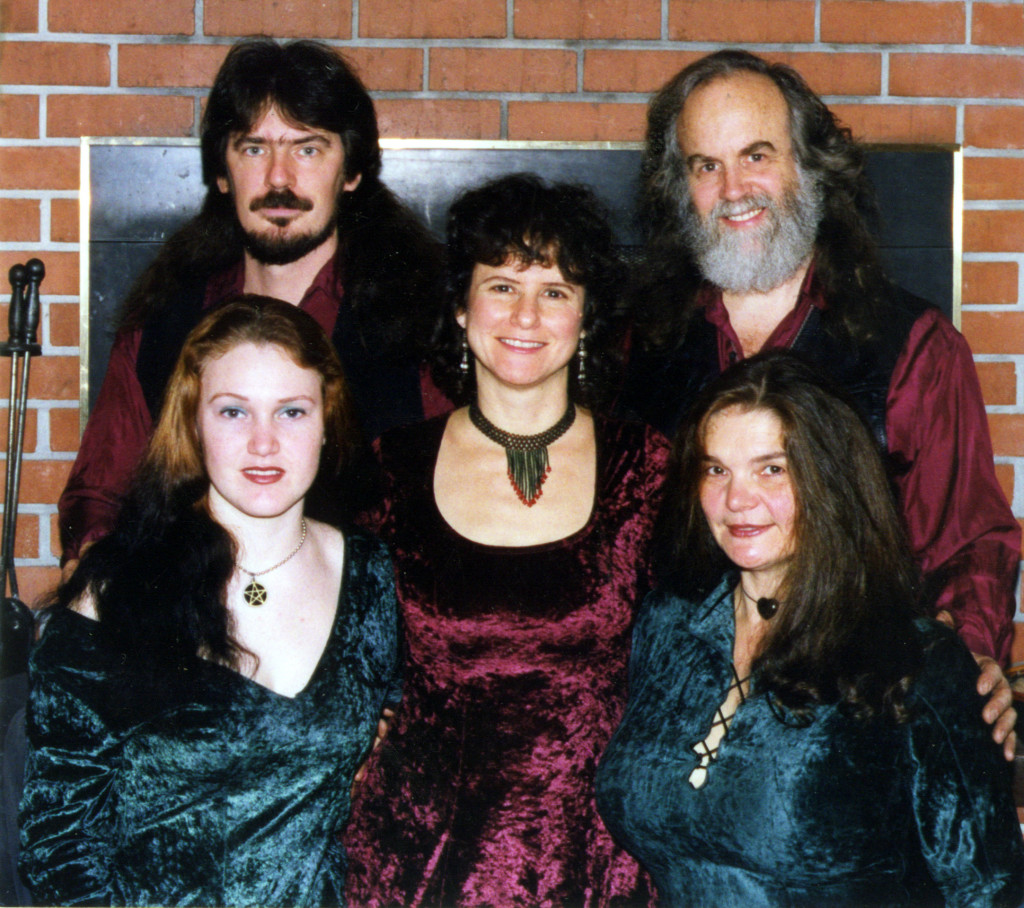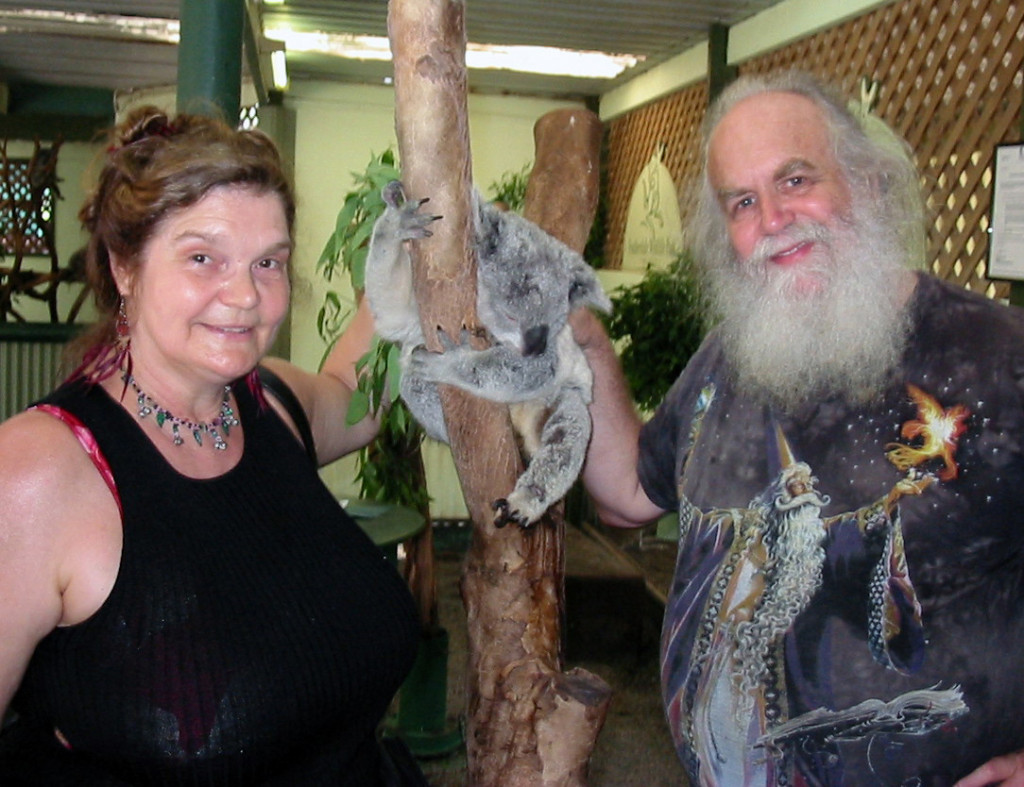The shoulders we stand upon – Part 4
The treasure trove of the Oligoamorists is teeming with heroes and monsters, idols, mythical figures and chimeras.
But the best stories are written by reality itself – or rather: it is reality that finds its expression in stories, absorbs impulses from them and finally weaves them into an incredibly colourful carpet.
I would like to dedicate this four-part series of articles to the history of Oligoamory, especially its fascinating roots and its most important value, self-awareness.

Being Political – Political Being
Anyone who has read the previous three entries in this series [ 1 ‖ 2 ‖ 3 ] might be tempted so far to dismiss Poly- and Oligoamory as a result of the exuberant imagination of two crude writers and the colourful visions of some obscure eccentrics.
However, I would like to counter the possibility of such a dubious mental retreat with this article, because the entire development that has led to the realization of Poly- and Oligoamory up to the present day was by no means a coincidence from the outset – and it was, also from the outset, always political.
I have already introduced Part 1 (Entry 47) with reference to the turn from the 19th to the 20th century, which, with its increasing religious freedom of conscience, increasingly offered people the possibility of a spiritual as well as psychological emergence from hitherto strictly traditional structures.
The first persons to benefit in this way from a “broader intellectual horizon” were, as already mentioned, at that time initially members of an educated bourgeois middle class – and from this middle class should also arise the first courageous persons who applied the newly won “freedom of thought” in many ways.
As the author of these lines, I would say that literally “the time was ripe”, because after the almost feverish second wave of industrialization of the 19th century, the realization began to mature in some circles of more educated classes that the hectic technical and structural upheavals in the lives of hundreds of thousands of contemporaries had begun to generate problematic mental and social issues: Many people felt deeply uprooted by the rural exodus and urbanization and often experienced themselves as mere “assistants” of inscrutable mechanized processes, which added to a general feeling of alienation and loss of self. Frequently observed consequences were symptoms of (urban) impoverishment and increased potential for conflict, e.g. due to alcoholism, outbreaks of (domestic) violence, various “mental illnesses” and radicalisation resulting in “gang/group formation”.
The intellectual response at the turn of the century to these phenomena was correspondingly manifold: In parliaments the first laws regarding industrial and social security were discussed; political movements began to offer nationalistic ideas of identification; the newly blossoming sciences of psychology and psychoanalysis tried to tackle the new mental manifestations (e.g. “neuroses”, “hysteria”, “manias”, “psychoses”); esoteric groups, offering alternative orientation, emerged (as described in Entry 48 – but also, for example, spiritism and theosophy); and from the awareness that the accumulated problems would probably affect the weakest members of a society in the first place (the poor, children, women), the nucleus of the welfare-, care- and reform-movement was born. However, all persons and organisations that tried to contribute in this area had to recognise that the female sphere of responsibility for “home/hearth/childcare” had hardly been affected at all by the structural upheavals of the dawning 20th century, but that the women afflicted were still burdened by the traditional nimbus of “renunciative self-sacrifice for the sake of the family”, which resulted above all in an increased workload and complete economic dependence.
This realization became the starting point for the first wave of feminism, when affluent women in welfare organizations realized that a change in the situation of less privileged fellow females could only be achieved through general social entitlement and comprehensive participation – with respect to all women.
It was the watershed-event for the so-called “Suffragettes Movement”, which from 1903 onwards fought for the importance and the awareness of women’s concerns and needs in public for over a quarter of a century – in quite a determined and persistent manner. Therefore, the resulting increased presence of women in universities and governmental institutions, their enhanced appreciation as scientists, politicians and artists and a resulting heightened female identity, which began to manifest itself in politics, spirituality, literature and research, was, as I said at the beginning, no coincidence. It was the beginning of the long overdue “Twilight of the Goddess” (Part 2 – Entry 48).
The first wave of feminism ended with two world wars, which in turn, in a twisted way and caused by necessity, contributed to a significantly increased leeway for women worldwide in terms of occupational entitlement and freedom of social mobility.
But the restorative masculinist backlash of the ensuing 1950s (USA: Truman/Eisenhower era; Germany: Adenauer era), however, subsequently revoked much of this newly won freedom again – “home/hearth/children” were once again proclaimed as the “true sphere of womanly devotion”.
This regression decisively triggered the second wave of feminism, which this time, though, was able to rely on a broad spectrum of sufficiently educated female campaigners in many different domains of society. As a result, the starting point for the second wave was an approach that was primarily aimed at establishing awareness in society as a whole, an approach that became apparent as “consciousness-raising”. This “consciousness-raising” in turn triggered a growing perception of numerous grievances regarding entitlement and autonomy in several contexts, so that in addition to feminist concerns, questions of civil rights, racial differences, the nuclear arms race and international proxy wars (e.g. Vietnam, Palestine, Afghanistan), and also increasing environmental pollution shifted into focus. This “raising of consciousness” also touched the individual level, since in this way a whole generation began to define itself in terms of an all-encompassing “awakening” in both intellectual and spiritual manner.
In combination with improved communication possibilities, this facilitated a swift solidary networking between various protest movements and alternative cultural initiatives: Black musicians like Aretha Franklin and Mahalia Jackson demanded respect and (world)peace, artists like Yoko Ono or Joan Baez denounced social defienciess, “New Witches” and neo-pagan priestesses like Starhawk and Shekhinah Mountainwater blockaded nuclear facilities.
In addition to these super-personal concerns, the market approval of effective medicinal contraceptives (first admission “birth control pill” USA 1960) turned another female main issue into one of the core topics of the “Second Wave”, which concerned the question of sexual autonomy. Although the focus here was initially on reproductive self-determination, this topic very quickly expanded into a question of general sexual liberty and self-expression.
Encouraged by the above-mentioned cross-cutting solidarity and the networking characteristics of second-wave feminism, this issues soon (end of 1960s) spread to the Queer and LGBT community, which until then had been largely pushed into a societal blind spot. Therefore, in my understanding, an important (additional) effect of Second Wave Feminism was the effective emergence of the LGBT movement, which was able to initiate its overdue process of consciousness-raising, awareness, entitlement, participation and acceptance by society as a whole (which, as with feminism itself, has not yet been fully accomplished).
From today’s perspective, it seems bizarrely fascinating that of all things the advocacy for all-encompassing sexual autonomy terminated the political second-wave feminism during the “Sex Wars” of the 1980s in the struggle regarding the movement’s attitude to issues such as sex-positivity, pornography, BDSM and the status of transsexual women.
From 1990 onwards, the “Third Wave” thus arose from the conviction that it would henceforth consistently oppose sexism of any kind.
In the meantime, many people with non-heteronormative and non-monogamous needs and backgrounds had already begun to look for their own viable and liveable ways of dealing with the demands of their everyday reality.
If you have read my Part 3 – Entry 49 carefully, you can easily see that “Polyamory” in this way was a direct result of such a need-oriented approach – referring to requirements as they existed in neopagan circles at that time.
These requirements, to enjoy beyond purely sexual autonomy additional independence and freedom of thought regarding the design of individual relationships (and their conception), however, did’nt only exist in alternative spiritual neo-paganism. The queer and sexpositive community (the latter increasingly including the BDSM scene) likewise needed new and progressive relationship patterns that took a more liberal and even promiscuous view of sexuality into account.
According to my interpretation, the relationship philosophy of Polyamory with its eclectic (i.e. “composed of elements of different systems”) origin – consisting of alternative spirituality, humanistic psychology and integrative feminism – particularly suited to offer a basis for relationship-patterns with essentially different (and differing) needs.
For example, a classic “ménage à trois” probably has different requirements than a BDSM-relationship with five participants or even an egalitarian network of asexual lovers.
Nevertheless, each of these cases today still revolves around the same principles to which feminism was committed in all its phases: raising consciousness that there is a demand for change; perceiving the needs of those affected; their all-round entitlement with regard to self-determined participation and, finally, the unlimited acceptance of the way they are.
And exactly in this respect I perceive the philosophy of “Polyamory” (and thus of course also my own conception of “Oligoamory“) as political – because, as I have stressed often enough, “Oligoamory is not something you do, but something you ARE”.
The German political scientist and historian Christian Graf von Krockow once said that “politics is the constant struggle between changing or preserving existing conditions”; accordingly the ideas and lives of Kipling, Heinlein, Maslow, the Zell-Ravenhearts, the Suffragettes, the Hippies, and those of the people at the Stonewall uprising proved to me that change is constantly necessary – and adaptation to this change is always possible.
Huge PS:
From the witches’ coven of Wicca to the committed organisations of feminism to queer activists of the LGBT movement and down into the depths of polyamorous lifestyle: All these communities, groups and initiatives seem to breathe more freely in the US, are more liberal, more often based on cooperation – and generally they seem much more inclusive in their attitude than in my country (Germany), with an approach that among themselves is more like “live and let live”, as well as a mentality of “Your xyz is not exactly my xyz – but your xyz is ok and my xyz is ok and when push comes to shove we are all in the same boat anyway”.
Why is this often so very different in Germany, in the land of allotment plots, house rules and garden fences, where differences and what separates is always emphasized combative and relentless, even when groups and initiatives belong by name to the same philosophy?
I, Oligotropos, believe that this difference in conduct unfortunately arises from the very different basic constellation of the overall social and political origin of the USA – in contrast to Central Europe (and especially to the Federal Republic of Germany).
In the US, the struggle of underprivileged groups has always been focused on “entitlement and participation”, whether it concerned People of Color, religious beliefs, orientation of sex and gender, or regarding the configuration of individual relationships. Thanks to the Declaration of Independence of 1776 with its assurance of “Life, Liberty and the Pursuit of Happiness”, the promotion of basic freedom for individuals and communities in the US was from the very beginning on the agenda and an established principle (although for a long time initially only for white men).
This situation was completely different in “old Europe”, especially concerning those highly authoritarian sovereign systems, which were the predecessors of the Federal Republic today. When, from the beginning of the 1960s onwards, the first wide-ranging campaigns for social liberalization were launched in many different areas, the groups involved not only had to stand up for their entitlement and participation, but at the same time they also had to struggle for the accompanying civil rights and liberties in a country that had been managed over the centuries (and up to the present moment) in a predominantly imperious and patriarchal way. This climate of a freedom process pursued aggressively in parts by all sides involved (e.g. APO / RAF) has resulted in elbow-thinking and a mentality of categorical enforcement, a legacy which still accompanies us today in all socio-political discussions in my country, accompanied by its sometimes frighteningly cold-hearted and often uncompromising style, right up to the social networks.
However, as I have now shown in the four parts of my series, ethical multiple relationships – such as Poly- and Oligoamory – are the result of a path of development spanning almost one hundred and fifty years of emerging multiculturalism and social pluralism.
I would like to experience this path to be a lasting inspiration for my country – and thus for all of us – and as an incentive to act with greater confidence, solidarity, social inclusion and peace.
Thanks to Wikimedia Commons for the provision of the artwork „We can do it“ von J. Howard Miller (Creative Commons 4.0 Lizenz)












